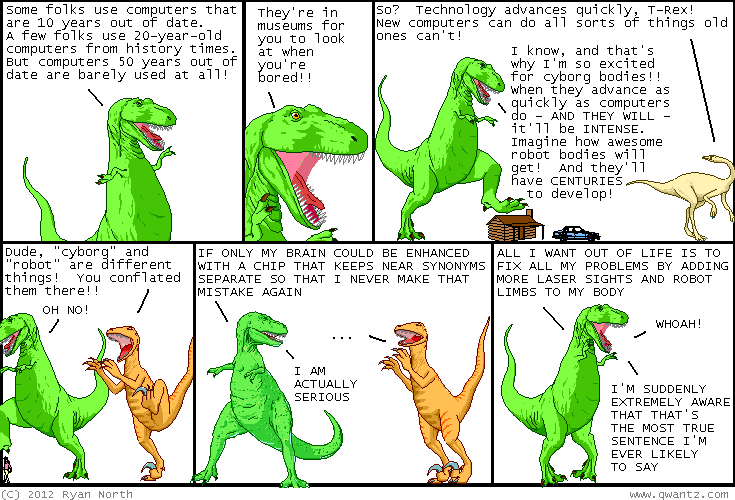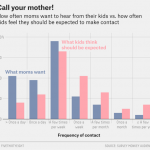I’m not going to make you wait til the end for the most glorious link I’ve found recently. Stick around for the rest, sure, but first watch through this video of Flight of the Conchords turning to children for help writing a charity song.
If you’re visiting from Jen’s blog, I just want to give you a heads-up that two friends and I are selling philosophy t-shirts through Spreadshirt.
Right now we’ve got one design for the Allegory of the Cave and one for the Trolley Problem. Let me know if there are other thought experiments you really need to be able to wear.
I worked on these shirts with my housemate and Michael Haycock –another college friend who has contributed some guest posts to the blog. So, while we’re talking about how awesome he is, I should link you to a post he wrote for his own blog on what the word ‘Testament’ denotes for Mormons.
[A]s I became better versed in the Bible (and especially non-KJV and non-English versions), I began to notice something: “testament” is not equivalent to “testimony.” In fact, when it appears in the NIV’s relation of the Last Supper (KJV: “this is my blood of the new testament”) it is translated as “covenant” and the Spanish Reina-Valera does it similarly with “pacto.” Some Protestant denominations, breaking free of traditional scriptural nomenclature, even call the Biblical subdivisions the “New Covenant” and the “Old Covenant”!
Not only revising my understanding of the scriptural basis for these names, it also keyed me into why some non-Mormon Christians might even be disturbed, not comforted, by the Book of Mormon’s subtitle’s invocation of Christ. The contexts from which the terminology arises –particularly in the epistles- contrast specifically the “old” Mosaic covenant of sacrifices and performances with the “new” Christian covenant of grace; the Law of Moses is fulfilled and superseded by the Law of the Gospel. If the Book of Mormon’s claim to be “Another Testament [Covenant] of Jesus Christ” is read in this light, it seems to try to diminish or replace the centrality of Christ’s atonement by asserting another God-given law!
In all honesty, I’m tempted to think that “Another Testament of Jesus Christ” was chosen due to the supposed testament/testimony synonymy. In fact, translations of the subtitle that cannot use a Romance cognate of “testament” show that “testimony” is, indeed, the desired meaning: in Arabic you get شهادة, shahada, the same word used by Muslims for their declaration of faith, and in Greek you get the word that has come down to us in English as martyr – both of which mean “witness,” not “covenant.” But it does raise the question: does the Book of Mormon present “Another Covenant of Jesus Christ”? If so, what is that covenant?
I’m just pretty flat-out delighted by the French Women of the Future trading cards that io9 turned up.

Meanwhile, Dinosaur Comics has beautifully expressed the kind of woman I want to be in the future: “All I want out of life is to fix all my problems by adding more laser sights and robot arms to my body!”
I went around asking for a recommendation for science fiction books or stories with really alien aliens recently. I read (and didn’t much care for) The Sparrow, but I quite liked “Story of Your Life” by Ted Chiang. A short story about philosophy of language and of physics, squee! (Some of the visual language stuff reminded me a bit of Beggars in Spain). Here’s an excerpt from Chiang’s story:
More interesting was the fact that Heptapod B was changing the way I thought. For me, thinking typically meant speaking in an internal voice; as we say in the trade, my thoughts were phonologically coded. My internal voice normally spoke in English, but that wasn’t a requirement. The summer after my senior year in high school, I attended a total immersion program for learning Russian; by the end of the summer, I was thinking and even dreaming in Russian. But it was always spoken Russian. Different language, same mode: a voice speaking silently aloud.
The idea of thinking in a linguistic yet non-phonological mode always intrigued me. I had a friend born of Deaf parents; he grew up using American Sign Language, and he told me that he often thought in ASL instead of English. I used to wonder what it was like to have one’s thoughts be manually coded, to reason using an inner pair of hands instead of an inner voice.
With Heptapod B, I was experiencing something just as foreign: my thoughts were becoming graphically coded. There were trance-like moments during the day when my thoughts weren’t expressed with my internal voice; instead, I saw semagrams with my mind’s eye, sprouting like frost on a windowpane.
I’m not at all fluent in ASL, but I have used Sign a couple times in dreams. But that was me translating not thinking in ASL. And I couldn’t fingerspell at all in that dream.
I’ll close the links out with one more awesome song. This one’s about the Higgs Boson.
For more Quick Takes, visit Conversion Diary!















